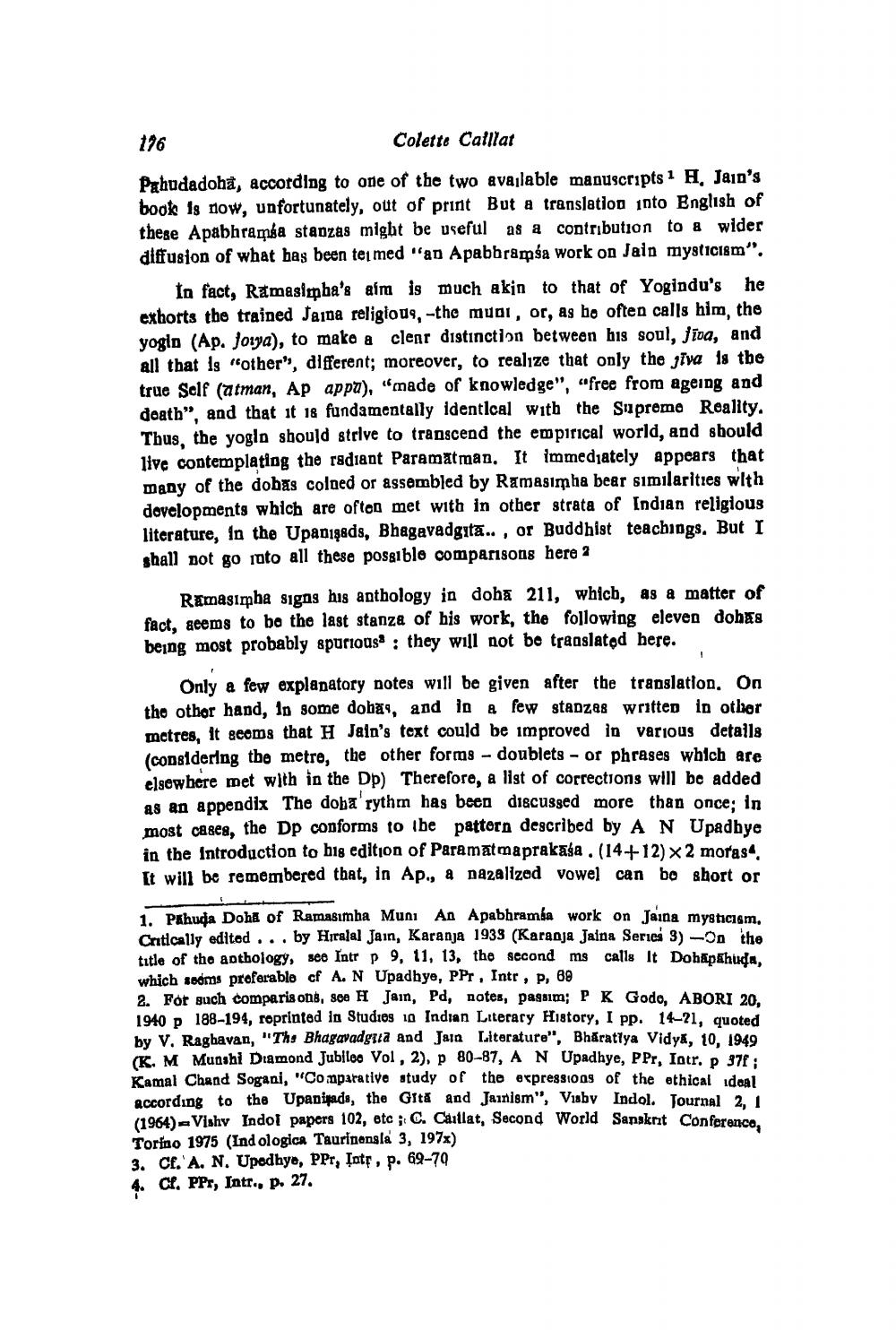________________
Colette Calllat
Pahudadoha, according to one of the two available manuscripts 1 H, Jain's book is now, unfortunately, out of print But a translation into English of these Apabhramsa stanzas might be useful as a contribution to a wider diffusion of what has been termed "an Apabbramsa work on Jain mysticism".
176
In fact, Ramasimha's aim is much akin to that of Yogindu's he exhorts the trained Jaina religious, -the muni, or, as he often calls him, the yogin (Ap. Joya), to make a clear distinction between his soul, fiva, and all that is "other", different; moreover, to realize that only the jiva is the true Self (atman, Ap appa), "made of knowledge", "free from ageing and death", and that it 18 fundamentally identical with the Supreme Reality. Thus, the yogin should strive to transcend the empirical world, and should live contemplating the radiant Paramatman. It immediately appears that many of the dohas colned or assembled by Ramasimha bear similarities with developments which are often met with in other strata of Indian religious literature, in the Upanisads, Bhagavadgita.., or Buddhist teachings. But I shall not go into all these possible comparisons here 2
Ramasimha signs his anthology in doha 211, which, as a matter of fact, seems to be the last stanza of his work, the following eleven dohas being most probably spurious: they will not be translated here.
1
Only a few explanatory notes will be given after the translation. On the other hand, in some dohas, and in a few stanzas written in other metres, it seems that H Jain's text could be improved in various details (considering the metre, the other forms - doublets - or phrases which are elsewhere met with in the Dp) Therefore, a list of corrections will be added as an appendix The doba rythm has been discussed more than once; in most cases, the Dp conforms to the pattern described by AN Upadhye in the Introduction to his edition of Paramatmaprakāśa. (14+12) × 2 moras, It will be remembered that, in Ap., a nazalized vowel can be short or
1. Pahuja Doha of Ramasimha Muni An Apabhramia work on Jaina mysticism. Critically edited... by Hiralal Jain, Karanja 1933 (Karanja Jaina Series 3) -On the title of the anthology, see Intr p 9, 11, 13, the second ms calls It Dohāpāhuḍa, which seems preferable cf A. N Upadhye, PPr, Intr, p, 68
2. For such comparisons, see H Jain, Pd, notes, passim; P K Gode, ABORI 20, 1940 p 188-194, reprinted in Studies in Indian Literary History, I pp. 14-21, quoted by V. Raghavan, "The Bhagavadgita and Jain Literature", Bharatiya Vidya, 10, 1949 (K. M Munshi Diamond Jubilee Vol, 2), p 80-87, A N Upadhye, PPr, Intr. p 37f; Kamal Chand Sogani, "Comparative study of the expressions of the ethical ideal according to the Upanisads, the Gita and Jainism", Visby Indol. Journal 2, 1 (1964) Vishv Indol papers 102, etc; C. Caillat, Second World Sanskrit Conference, Torino 1975 (Indologica Taurinensla 3, 197x)
3. Cf. A. N. Upedhye, PPr, Intr, p. 69-70 4. Cf. PPr, Intr., p. 27.




